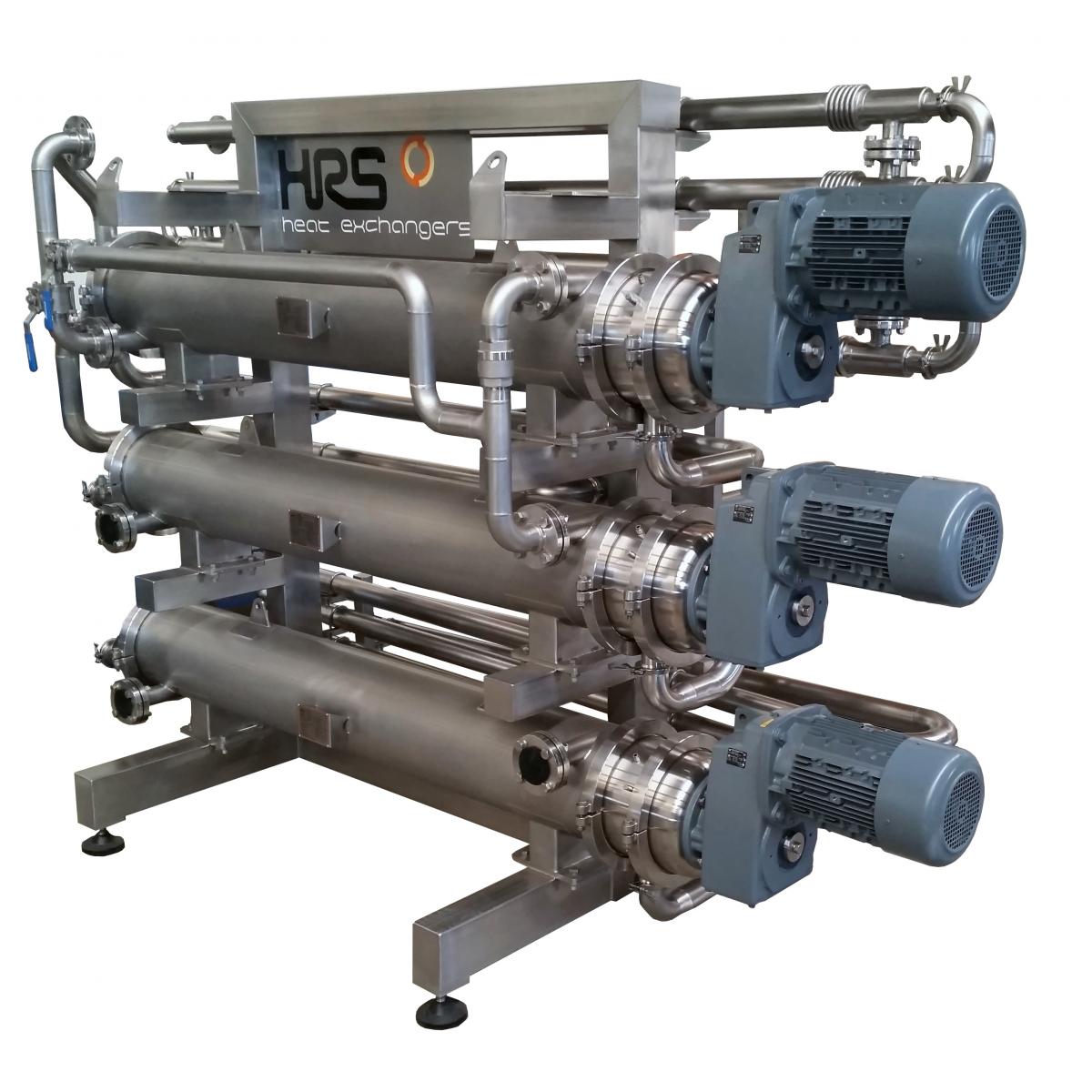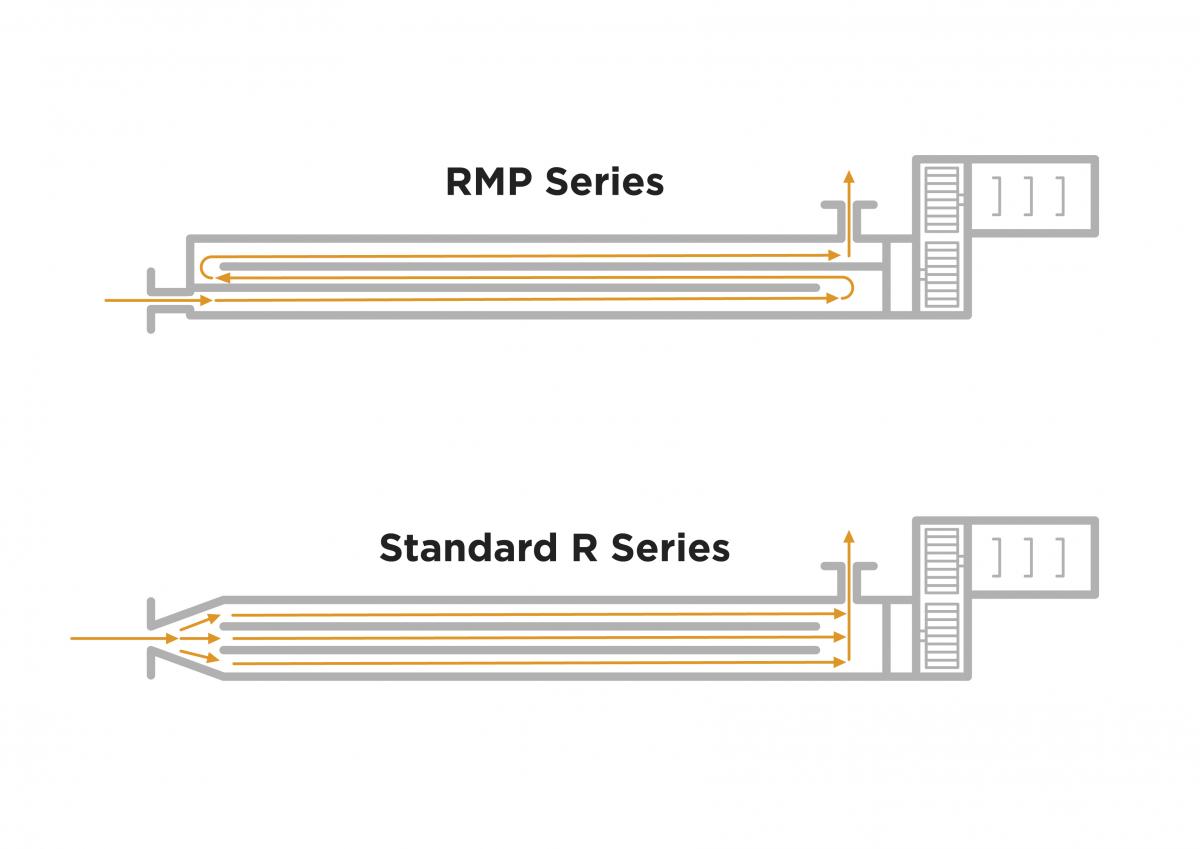HRS Heat Exchangers has launched the RMP Series that aims to improve heat transfer for challenging viscous materials. This new series is a multi-pass version of the company’s HRS R series of scraped surface heat exchangers for multi-tube scraped surface installations. It works for a range of viscous materials, and is being deployed in a number of sectors, including viscous and starchy foods like thick sauces, pastes, creams and pet foods.

Each R Series scraped surface heat exchanger includes multiple tubes powered by a single motor and gear system
Available in single and multiple tube configurations, one of the most popular models in the standard R Series is the R3. Containing three tubes, it provides a greater heat transfer area and capacity within the same footprint as a single unit, as well as all the benefits of a single heat exchanger, such as a single set of connections to the product and services, and the reliability and cost savings of a single drive assembly compared with multiple motors.
In its standard configuration, product passes from a single-entry point through each of the three tubes in parallel before exiting the exchanger from a single port. This arrangement reduces the overall velocity of the product as it passes through the heat exchanger and prevents operation in a pure counter-current flow.

Cutaway image of a R3 heat exchanger showing the parallel tubes, each with its own scraper
However, the new multi-pass arrangement, known as the RMP, now links each of the three tubes in series: product enters through one tube, passes down the next and then moves back up the third. The use of longitudinal baffles in the outer shell achieves a true counter-current flow to improve heat exchange efficiency, while maintaining product velocity helps reduce pressure drop and increases product mixing. Crucially, the RMP maintains the overall large surface area of a standard R3 system within a compact unit; one of the system’s key benefits.

The new RMP Series passes material through each tube in order, rather than at the same time, to improve heat transfer while maintaining product velocity
As the new layout has a consistent cross-sectional area, the risk of dilution and blending from cleaning-in-place (CIP) operations is greatly reduced compared to other large surface area heat exchangers. Flushing is therefore more efficient, enabling greater recovery of high value products without contamination or mixing, while the cleaning phase itself is also more effective due to the maintained velocity.
Nike Air Max 97














